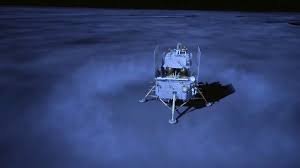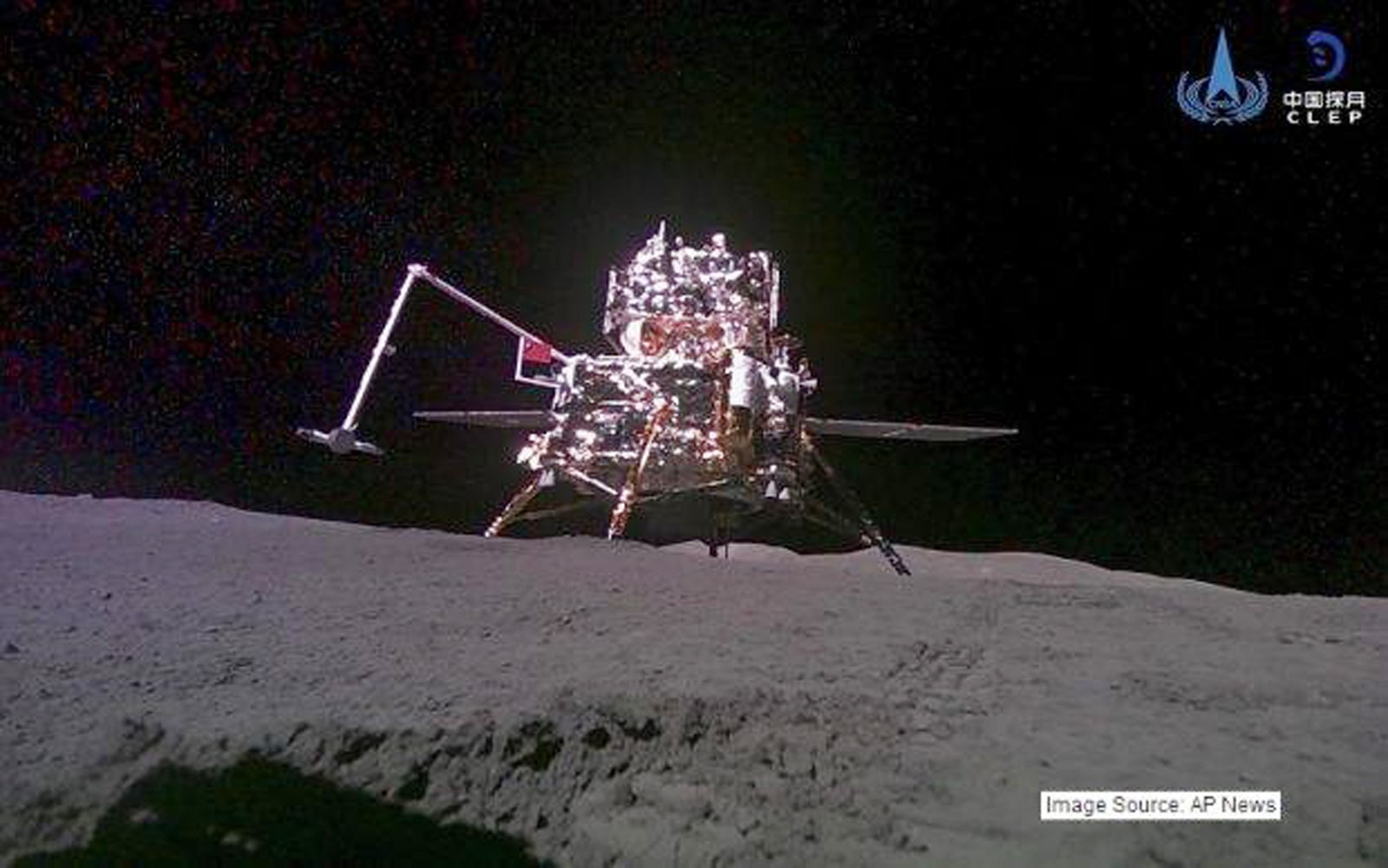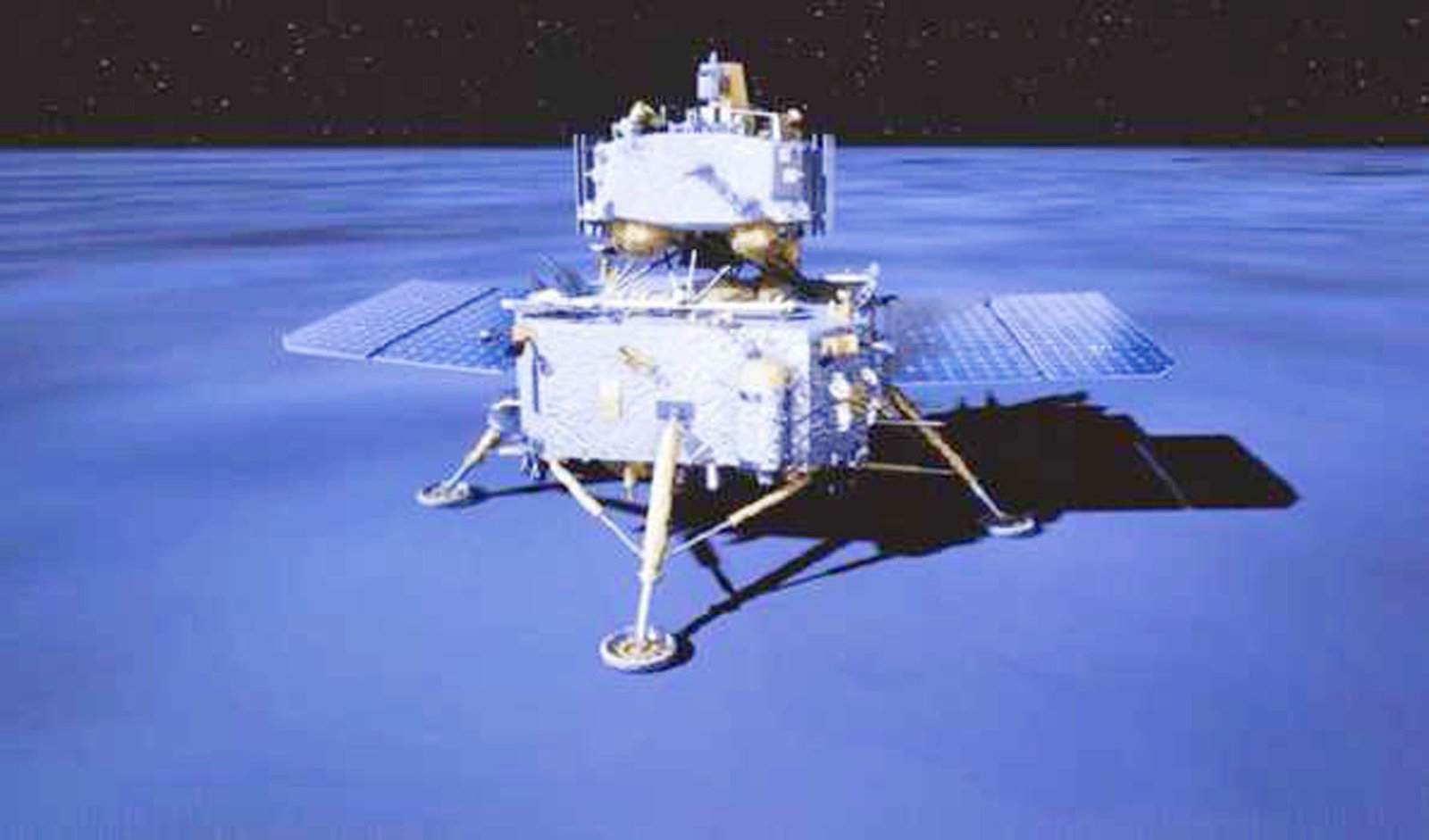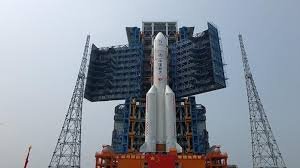BEIJING, June 2: A Chinese spacecraft successfully touched down on the far side of the Moon on Sunday, in the first endeavour of its kind to collect samples from this rarely explored terrain.
The Chang’e-6 landed at the designated landing area at 6:23 am (Beijing Time) in the South Pole-Aitken (SPA) Basin for the first time in human history, the China National Space Administration (CNSA) announced.
Chang’e-6 consists of an orbiter, a returner, a lander and an ascender.
Since its launch on May 3 this year, it has gone through various stages such as Earth-Moon transfer, near-Moon braking, lunar orbiting and landing descent.
The lander-ascender combination separated from the orbiter-returner combination on May 30, the CNSA said.
For the powered descent, regarded as the most complex manoeuvre, an autonomous visual obstacle avoidance system was used to automatically detect obstacles. A visible light camera selected a comparatively safe landing area based on the brightness and darkness of the lunar surface, state-run Xinhua news agency reported.
The Chang’e-6 mission is tasked with collecting and returning samples from the Moon’s far side, the first endeavour of its kind.
India became the first country to land near the little-explored lunar south pole region last year when its Chandrayaan-3’s lander, carrying the Pragyaan rover successfully landed there.
The Chang’e-6 landing site is at an impact crater known as the Apollo Basin, located within the SPA Basin.
The choice was made for the Apollo Basin’s potential value of scientific exploration, as well as the conditions of the landing area, including communication and telemetry conditions and the flatness of the terrain, Huang Hao, a space expert from the China Aerospace Science and Technology Corporation (CASC) said.
The terrain on the far side of the Moon is more rugged than the near side, with fewer continuous flat areas Huang told Xinhua.
However, the Apollo Basin is relatively flatter than other areas on the far side, which is conducive to landing. The lander is equipped with multiple sensors, including microwave, laser and optical imaging sensors which can measure distance and speed, and identify obstacles on the lunar surface, Huang said.
To prevent interference to optical sensors by lunar dust during landing, the lander is also equipped with gamma-ray sensors to accurately measure the height through particle rays, ensuring that the engine can be shut down on time and the lander can touch down smoothly on the lunar surface, he added.
After the landing, the probe is scheduled to complete sampling within two days. It has adopted two methods of Moon sampling, which include using a drill to collect subsurface samples and grabbing samples on the surface with a robotic arm.
Due to the Moon’s obstruction, the Earth-Moon communication window period on the far side of the Moon, even with the help of the Queqiao-2 relay satellite service, is still shorter than that on the near side. Therefore, the sampling time of Chang’e-6 will be reduced to about 14 hours, compared with the 22 hours used by its predecessor Chang’e-5, the report said.
The CNSA said earlier that the mission is poised to make breakthroughs in key technologies, such as automatic sample collection, take-off and ascent from the far side of the Moon. Meanwhile, the probe will carry out scientific exploration of the landing zone.
The CNSA announced that scientific instruments from France, Italy and the European Space Agency/Sweden will be on board the lander of the Chang’e-6 mission and a Pakistani payload on the orbiter.
This is the first time China has included an orbiter from its all-weather ally Pakistan in its Moon mission.
According to reports from Pakistan quoting the Institute of Space Technology (IST), the satellite ICUBE-Q has been designed and developed by IST in collaboration with Shanghai Jiao Tong University and Pakistan’s national space agency Suparco.
The Chang’e lunar exploration probe is named after the Chinese mythical Moon goddess.
The Chang’e 5 brought samples from the Moon’s near side. Chinese said during the analysis of the samples it was found they contained water in tiny beads embedded in lunar dirt.
China also plans to have a lunar station on the Moon in future.
A major space power, China in the past successfully launched unmanned missions to the Moon which included landing a rover. China has also sent a rover to Mars and built a space station which is currently in operation.
Earlier, China announced plans for a manned lunar landing by 2030.
The country’s plans include landing astronauts on the Moon by 2030 and building a research base at its south pole – a region believed to contain water ice.
Sunday’s landing comes as a growing number of countries, including the United States, eye the strategic and scientific benefits of expanded lunar exploration in an increasingly competitive field. (PTI)












